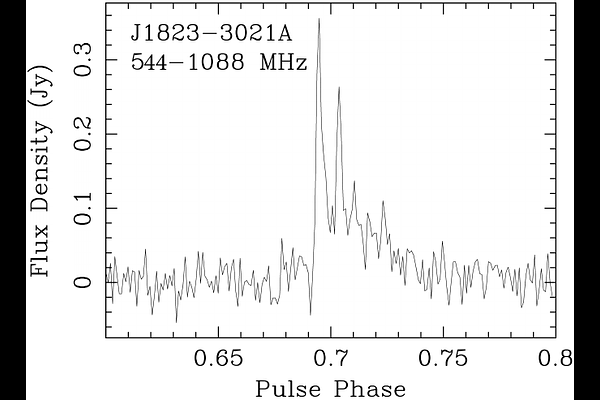Detection of over 37,000 giant pulses per hour from PSR J1823$-$3021A with UHF baseband observations from MeerKAT

Detection of over 37,000 giant pulses per hour from PSR J1823$-$3021A with UHF baseband observations from MeerKAT
Simon C. -C. Ho, Matthew Bailes, Chris Flynn, Federico Abbate
AbstractGiant pulses (GPs) occur in high magnetic-field millisecond pulsars (MSPs) and young Crab-like pulsars. Motivated by the fast radio bursts (FRBs) discovered in a globular cluster (GC) in the M81, we undertook baseband observations of PSR J1823$-$3021A, the most active GP emitter in a GC with the MeerKAT UHF band receiver (544-1088 MHz). The steep spectral index of the pulsar yields a GP rate of over 37,000 GPs/hr with $S/N>7$, significantly higher than the 3000 GPs/hr rate detected by Abbate et al. 2020 with the L-band (856-1712 MHz) receiver. Similarly to Abbate et al 2020, we find that the GPs are (1) strongly clustered in 2 particular phases of its rotation, (2) well described by a power-law in terms of energies, (3) typically broadband, and have steep spectral indices of $\approx-3$. Although the integrated pulse profile is not significantly polarised ($<1\%$ linear and $<3\%$ circular), one of the brightest GPs displays notable polarisation of $7\%$ (linear) and $8\%$ (circular). The high-time resolution data reveals the GPs have a range of single-peak and multi-peak morphologies, including GPs with three distinct peaks. For the first time, we measured the temporal scattering of the pulsar using 49 bright, narrow, single-pulse GPs, obtaining a mean value of $5.5\pm0.6$ $\mu$s at 1 GHz. The distinct periodicity and low polarisation of GPs differentiate them from typical FRBs, although potential quasi-periodicity substructures in some GPs may suggest a connection to magnetars/FRBs.